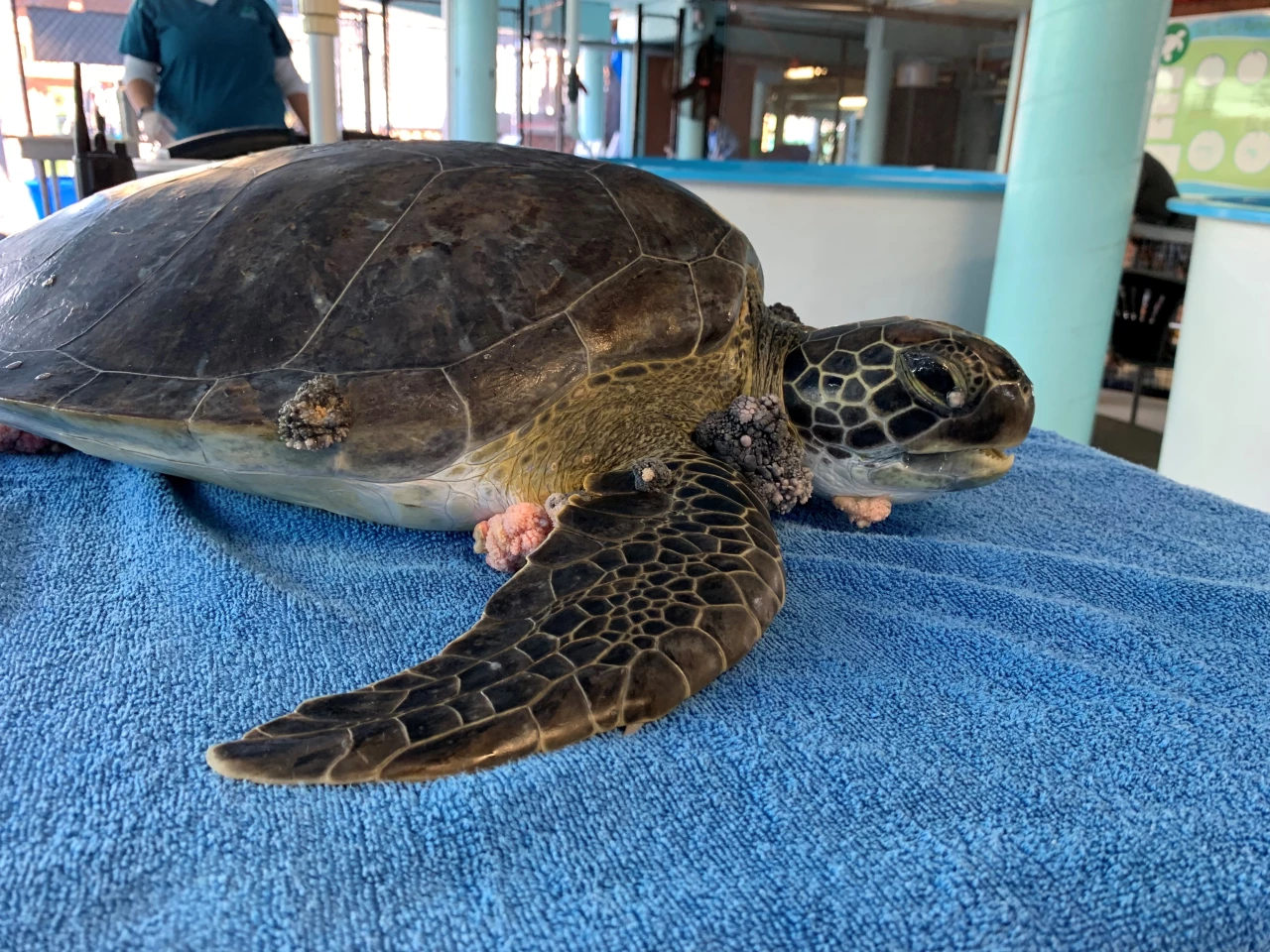It's a sad fact that many sea turtles now suffer from fibropapillomatosis, a disease in which debilitating tumors grow on various parts of the body. There may be new hope, however, as a recent study suggests that exposure to sunlight could help afflicted turtles recover.
Although fibropapillomatosis is associated with infection by a herpesvirus, many scientists believe that increasing levels of such infections may in turn be caused by pollution of the marine environment. In any case, even when the tumors are surgically removed from wild-caught turtles, the animals often don't survive the procedure – and even if they do, the tumors frequently grow back.
When researchers from Florida Atlantic University analyzed the blood chemistry of green sea turtles both with and without evident fibropapillomatosis, they noted that animals with the disease had lower vitamin D levels. Given the fact that the body produces vitamin D in response to exposure to the ultraviolet spectrum of sunlight, the scientists wondered if increasing that exposure might help the afflicted turtles.

For the study, turtles recovering from tumor-removal surgery were housed in tanks with differing levels of sunlight exposure, for periods of up to six months. When their blood chemistry was subsequently analyzed, it was found that the animals which were exposed to higher UV levels for longer timespans did indeed have higher levels of vitamin D. And importantly, they also experienced significantly less regrowth of tumors than turtles which didn't get as much sunlight.
Needless to say, excessive UV exposure comes with problems of its own, such as increased levels of conditions like skin cancer. Nonetheless, it is now hoped that the team's findings may lead to better outcomes for wild-caught turtles which are treated for fibropapillomatosis before being released back into the wild.
"Although a cure for this disease has yet to be discovered, we have shown that exposure to higher UV light increases vitamin D in turtles, as it does in other animals including humans," said Prof. Sarah L. Milton, senior author of the study. "Increased plasma vitamin D levels are then in turn correlated with lower rates of disease. This potential to boost health could therefore contribute to improved recovery. For future studies, we would be interested to see if there are direct links between vitamin D levels and immune function."
A paper on the research was recently published in the journal Animals.
Source: Florida Atlantic University





